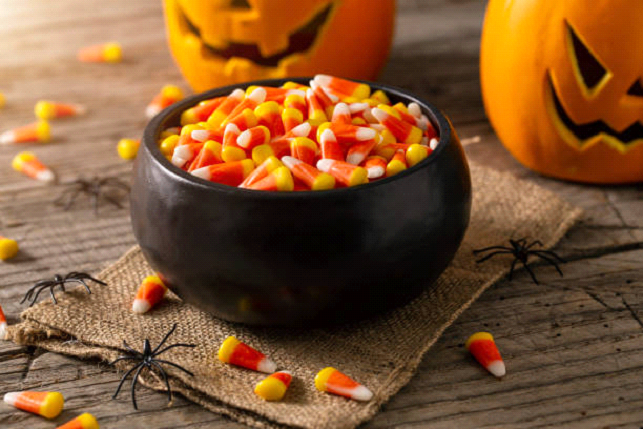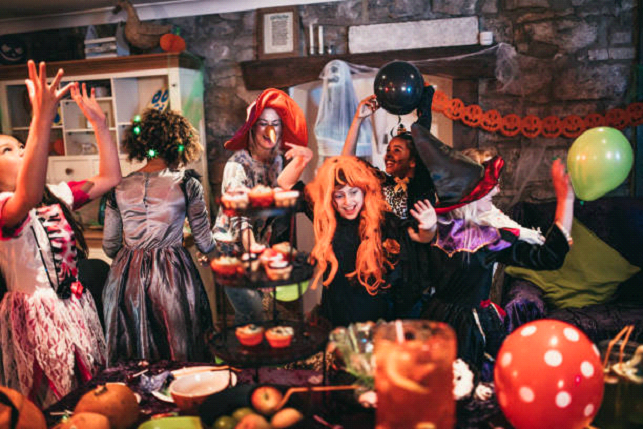We all love Halloween with its parties, its costumes, and its "trick or treating." But, have you stopped to think about its effect on the environment? Unfortunately, this is an ecological disaster. Every year we buy disposable costumes that can only be used for a few hours, paper invitation cards, or tons of candy with too much sugar.
How can we achieve a sustainable Halloween?

The first step is to change our approach to the party and try to make it as ecological as possible. Think that most costumes, hats, masks, cobwebs, candy wrappers, or plastic bags will end up in the trash on November 1 or 2 with the damage that this causes to our planet.
We will give you a series of indications so that you can contribute your grain of sand to this cause. The celebration will continue to be just as fun and terrifying, and you will be contributing to the care of the environment.
We will give you a series of indications so that you can contribute your grain of sand to this cause. The celebration will continue to be just as fun and terrifying, and you will be contributing to the care of the environment.
Use a Recycled Costume

Every year we buy new costumes for this occasion. These are not designed to last but to play their part that night. They are usually made of low-quality synthetic materials to make them cheaper. It is assumed that next year we will buy a different one.
You can also use accessories made with shoe boxes, newspapers, or magazines. For example, you can use an old sheet to make a ghost costume by cutting out two circles for the eyes and making chains out of cardboard.
You can also use accessories made with shoe boxes, newspapers, or magazines. For example, you can use an old sheet to make a ghost costume by cutting out two circles for the eyes and making chains out of cardboard.
Substitute Sweets

Our children receive many candies with high sugar content every year our children receive, from friends, family, and neighbors. This can be detrimental to your health in general and your teeth in particular. The good idea is to change a bit and this year give out pencils or funny erasers. A healthier alternative with which we will avoid the saturation of sweets.
As for the party food, come up with a tasty eco snack. You can turn tangerines into pumpkins and make ghost-shaped cheese cookies, spider-like truffles, or skeleton lollipops. There are thousands of simple recipes for a terrifying snack.
As for the party food, come up with a tasty eco snack. You can turn tangerines into pumpkins and make ghost-shaped cheese cookies, spider-like truffles, or skeleton lollipops. There are thousands of simple recipes for a terrifying snack.
Avoid the use of paper and plastics

If you are going to organize a house party for your children and their friends, choose to send the invitations by email. They can even be sent by WhatsApp or other channels, thus avoiding unnecessary and unsustainable paper waste. Also reduce the use of glasses, kitchen utensils, cutlery, and plastic plates. All this will later go to waste, causing great ecological damage. Although it means more work, it is better to use cloth napkins that can later be used at the next party and the usual tableware in our home.
Reuse Old Decorations

Surely every year, you throw away your Halloween decorations. We encourage you to recycle past parties' decorations or create a new one with natural products or recycled materials. For example, you can buy real pumpkins grown in local gardens and turn them into decorations. After the party, it is possible to use them as compost.
Another option is to create a spooky and spooky decoration with simple glass jars and tin cans. You can decorate them with dry branches and attach paper spiders or bats to scare the guests.
Another option is to create a spooky and spooky decoration with simple glass jars and tin cans. You can decorate them with dry branches and attach paper spiders or bats to scare the guests.
Select and Separate Waste

Try to create a minimum impact with the waste when the party is over. Recycle all the materials you have used, such as bottles, cans, paper, or cardboard. Organic items like pumpkins, tangerine skins, nutshells, twigs, or straw can be composted.






